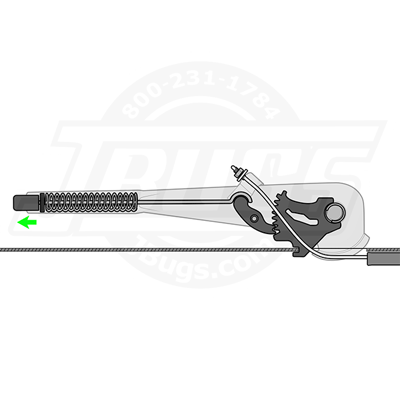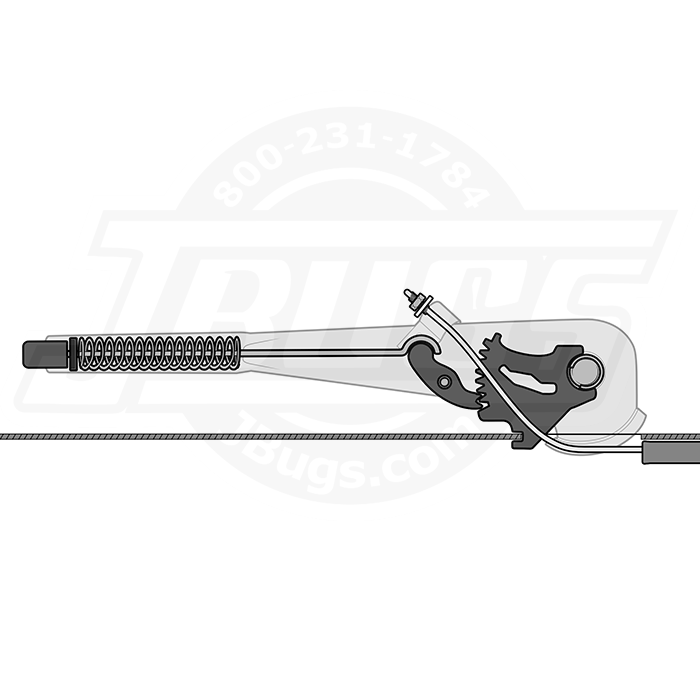




Your cart is currently empty.


The following information is courtesy of Rob and Dave's Aircooled VW Resources. **Website is no longer hosted.
DISCLAIMER: Rob and Dave have prepared this information from their own experiences. They have not assumed any specialized mechanical knowledge, but they DO assume that anyone using this information has at least some basic mechanical ability.
We hope you find this information useful, but we don't take any responsibility for anything which happens to you, other people, your VW or any other property or goods resulting from your use of this material.
Feel free to print off any of this information for your own use. If you intend to link this material to another site, reprint it, or in any other way redistribute it, please leave the information complete, including this disclaimer section, and provide a link to this Rob and Dave's VW resources.
Note: The hand brake should be adjusted whenever the rear brake shoes have worn enough to allow you to raise the lever five clicks without noticeable braking action. It is essential that the cables be adjusted to that the "compensating" lever (immediately below the adjusting nuts on the hand brake) is horizontal when the hand brake is applied. If the rear brake shoes are adjusted properly but the compensating lever isn't horizontal after adjustment of the hand brake cables, one cable may be stretched and, if left in service, will eventually break. If only one of the cables is broken or damaged, you don't have to replace the other one, but one cable will be more stretched than the other. It's easier to adjust two cables of the same age, so we recommend replacing both cables when one brakes.
WARNING -- Loosen the two castle nuts (one on each side) while the car is on the ground. The castle nut should have at least 217 ft-lbs of torque on it -- the leverage needed to remove it is enough to topple a car off the jackstands.
Note: If you car is equipped with spinners (like ours is), the castle nuts will not be accessible with the wheels on the car. After removing the rear wheels, we had success with lowering the brake drums down onto large blocks of wood and firmly appling the parking brake. This plus the weight of the car on the wooden block held the brake drums in place while we removed and later replaced the castle nuts.
Note: If you're replacing both cables, do one cable at a time so you'll have the other cable as a reassembly guide.
Note: on cars manfactured since August 1, 1966, the rear wheel track is wider. These models have longer hand brake cables. Compare the lengths of the new cable and the old cable to make sure you have the right replacement cable.
Note: Since there are no bearing in the rear brake drums, installation is straightforward. Simply slip the new drum onto the splines in the rear wheel shaft. If you have The only problem you may encounter is getting the new drum over the new shoes. Back off the brake adjusting stars completely to provide clearance.
Copyright © JBugs.
All rights reserved. All images protected by US and International copyright laws. No part of this website may be reproduced, distributed, or transmitted in any form or by any means.
All Prices subject to change without notice or obligation. Not responsible for typographical or photo errors. "Volkswagen", "VW","Beetle", "Super Beetle", "Bus", "Ghia", "Type 2", "Type 3", "Thing", "Rabbit", "Cabriolet", "Jetta", and "Golf" are trademarked by Volkswagen of America and are used for descriptive purposes only.